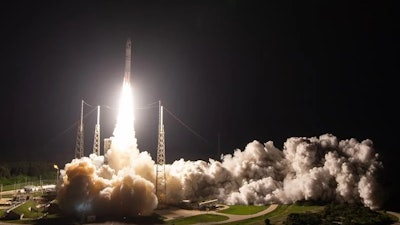
CAPE CANAVERAL SPACE FORCE STATION, Fla. - A United Launch Alliance (ULA) Vulcan rocket carrying the USSF-106 mission for the United States Space Force's Space Systems Command (SSC) lifted off on Aug. 12 at 8:56 p.m. EDT from Space Launch Complex-41 at Cape Canaveral Space Force Station. This mission marks the first National Security Space Launch aboard the next-generation Vulcan rocket.
Gary Wentz, ULA vice president of Government and Commercial Programs, said, "National security begins at liftoff. Vulcan did exactly what it was built to do: deliver a critical mission with power, precision and confidence. We are proud to play a role in strengthening the nation's space capabilities."
Standing at 202 feet tall and weighing 1.74 million pounds, the Vulcan configuration is enabled by the powerful Centaur V upper stage, which has 2.5 times the energy and 450 times the endurance of its predecessors. Centaur V delivered the USSF-106 spacecraft directly to the Geosynchronous Earth orbit (GEO).
Tory Bruno, ULA president and CEO, said, "Vulcan is a catalyst to supporting national defense in the strategic warfighting domain of space. Vulcan is the world's most capable, high energy orbit rocket meeting the demand for expanding space competencies. Vulcan provides flexibility to our nation's decision makers as we combat our adversaries attempts to disrupt the U.S. in space operations. This launch begins a new era in national space security."
ULA has served as the launch backbone for past national security space missions having successfully launched nearly all of the 132 critical missions to orbit for the U.S. Space Force and National Reconnaissance Office since the company's founding in 2006. This legacy, built on Atlas V, Delta II and Delta IV rockets, now continues with Vulcan.
ULA's next launch is the third Atlas mission for Amazon's Project Kuiper, Kuiper 3, which will launch from Cape Canaveral Space Force Station, Florida.






















